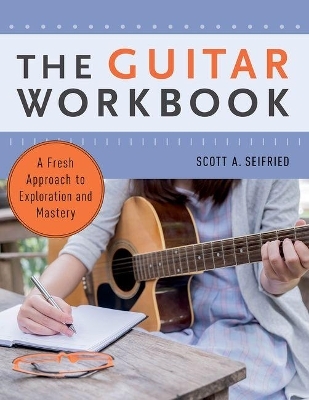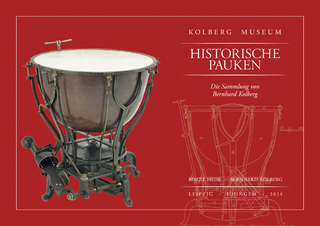
The Guitar Workbook
Oxford University Press Inc (Verlag)
978-0-19-066082-6 (ISBN)
Increasingly, guitar study is offered alongside band, orchestra, and chorus in school music programs. This development has drawn a new population of students into those programs but has left music educators scrambling to developing meaningful, sequential courses of study that both meet the needs of these new students and align with state, county, and national curricula. Few available guitar methods are designed with the classroom in mind, and fewer still take a holistic approach to teaching and learning the instrument. In short, teachers are left to navigate a vast array of method books that cover a variety of styles and approaches, often without the confidence and experience necessary to know 'what to teach when.' The Guitar Workbook: A Fresh Approach to Exploration and Mastery addresses the needs of these educators.
Throughout the book's 20 lessons, students are encouraged to explore the ways various guitar styles and notation systems differ, as well as the ways they support and complement each other. Lessons cover myriad topics including pick-style playing, basic open position chords, finger-style technique, and power chords. Suggested 'Mastery Activities' at the end of each lesson support higher-order thinking, contextualize the skills and concepts studied, and provide a jumping off point for further exploration. Additionally, suggestions for further study point teachers and students to resources for extra practice.
Scott Seifried teaches classroom guitar at James W. Robinson Secondary School in Fairfax, Virginia. He has served on the American String Teachers Association (ASTA) Guitar-In-The-Schools Committee; the National Association for Music Education (NAfME) Guitar Council, and was a contributor to the National Coalition for Core Arts Standards (NCCAS) National Standards for Harmonizing Instruments, in addition to being a clinician for the Guitar & Accessories Marketing Association (GAMA).
Introduction
Lesson 1: Holding the Guitar, Making a Sound and Reading Tablature
Lesson 2: Reading Fretboard Diagrams and Playing Chords
Lesson 3: Reading Staff Notation
Lesson 4: Open Position Chords; Foundational Shape (FS) 3
Lesson 5: Playing Two Notes Together
Creativity Project I
Lesson 6: Eight Note Rhythms, Alternate Picking, and Chord Strumming
Lesson 7: The Half Barre; Foundational Shapes 4 and 5
Lesson 8: Open Power Chords, the A Pentatonic Minor Scale, and twelve-Bar Blues
Lesson 9: Building Triads, Harmonizing melodies, and Recognizing Chords Written on the Staff
Lesson 10: Slash Chords, Suspensions, and Rests
Creativity Project II
Lesson 11: Finger-style Playing, Rest Stroke and Open Bass Strings
Lesson 12: Embellished Chords and Advanced Strumming Patterns
Lesson 13: Completing Open Position
Lesson 14: Major Scales, Key Signatures, and Accidentals
Lesson 15: Creating Bass Lines and Power Chords
Creativity Project III
Lesson 16: Right Hand Arpeggios
Lesson 17: The Full Barre
Lesson 18:Two Octave Scales - A and E Major
Lesson 19: Music in Two Parts
Lesson 20: Roman Numerals, Transposition and Chromatic Pitches
Creativity Project IV
Appendix A: Assessment Rubrics and Grading
Appendix B: Suggested Resources for Further Study
| Erscheinungsdatum | 01.11.2017 |
|---|---|
| Zusatzinfo | 304 line art; 14 halftones |
| Verlagsort | New York |
| Sprache | englisch |
| Maße | 213 x 277 mm |
| Gewicht | 431 g |
| Themenwelt | Kunst / Musik / Theater ► Musik ► Instrumentenkunde |
| Kunst / Musik / Theater ► Musik ► Musiktheorie / Musiklehre | |
| Schulbuch / Wörterbuch | |
| Sozialwissenschaften ► Pädagogik | |
| ISBN-10 | 0-19-066082-1 / 0190660821 |
| ISBN-13 | 978-0-19-066082-6 / 9780190660826 |
| Zustand | Neuware |
| Informationen gemäß Produktsicherheitsverordnung (GPSR) | |
| Haben Sie eine Frage zum Produkt? |
aus dem Bereich


